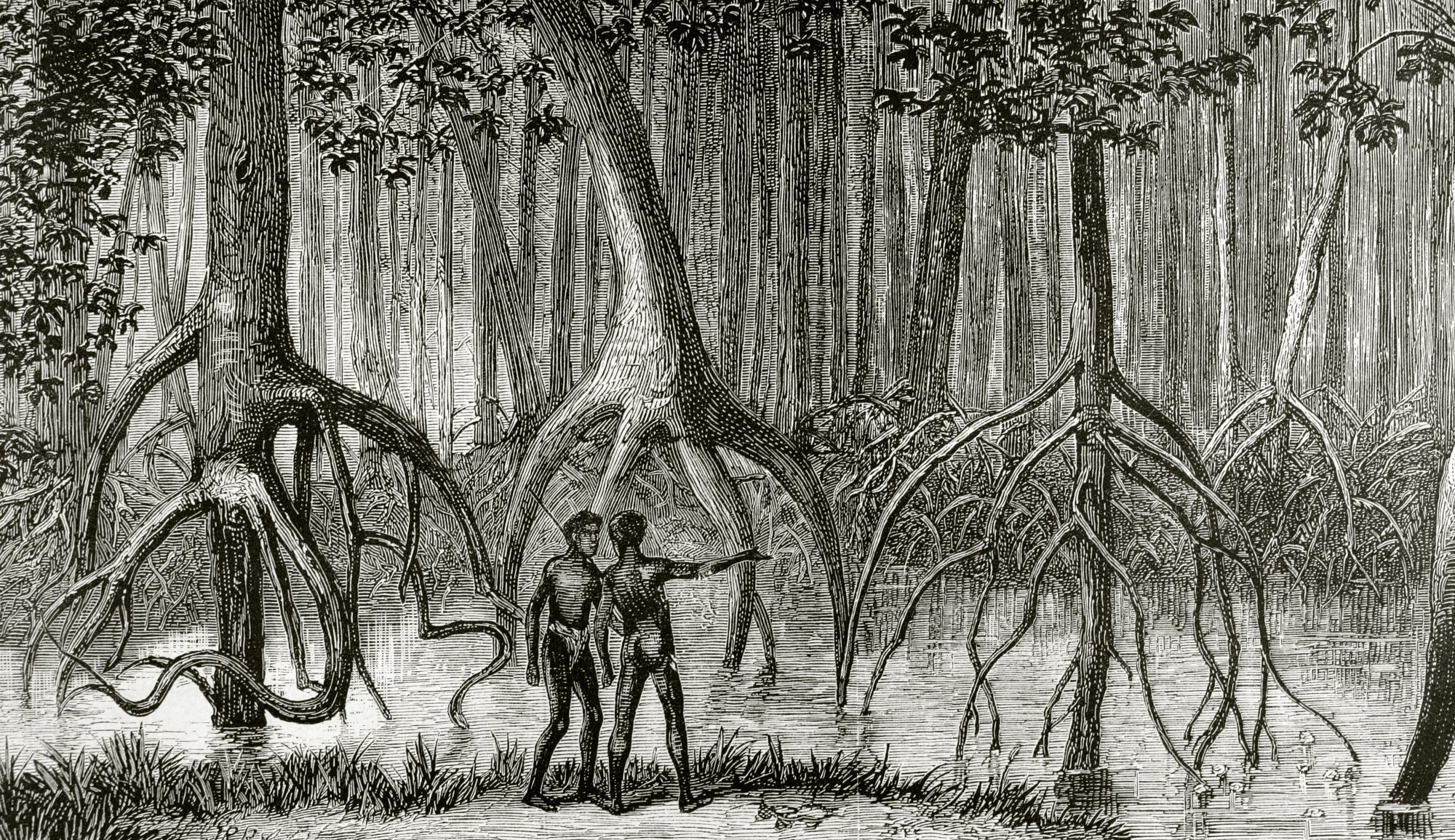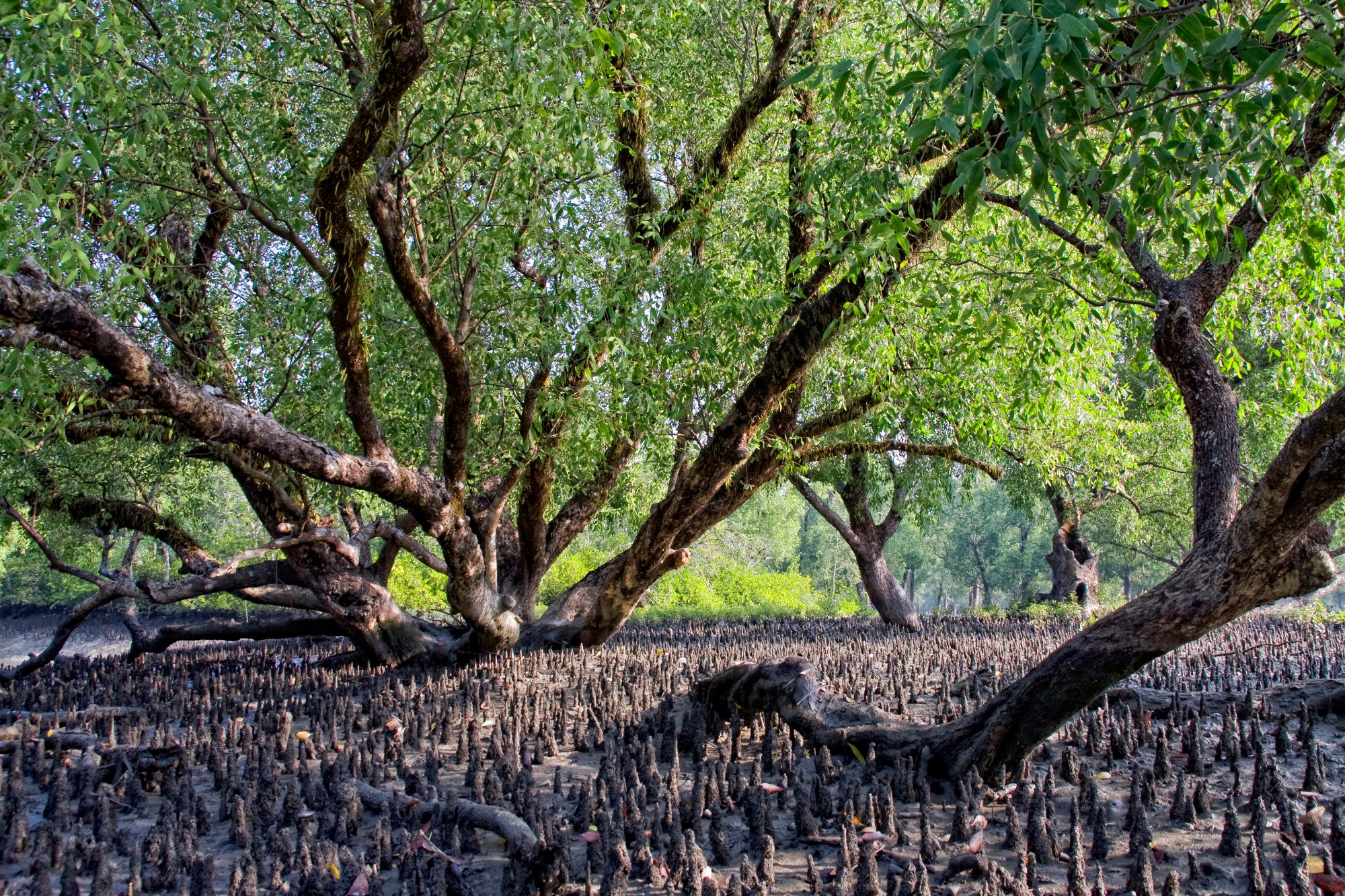
How the word ‘mangrove’ has contested etymological roots
- While most agree the word ‘mangrove’ derives from Portuguese, there is debate as to what its exact origin is
- July 26 is International Day for the Conservation of the Mangrove Ecosystem; mangroves are disappearing three to five times faster than global forest losses
“[A]mongst all the rest there growes a kinde of tree called Mangrowes, they grow very strangely, & would make a man wonder to see the manner of their growing.”
This 1615 account from Bermuda was one of the earliest descriptions in English of the ecosystem once unfamiliar to Europeans – mangroves.
Inter-tidal forests, found on sheltered coastlines in the tropics and subtropics, mangroves comprise salt-tolerant trees bearing characteristic partially exposed networks of roots. Mangrove forests – hùhng syuh làhm 紅樹林 “red tree forest”, after the reddish wood of the Rhizophoraceae – are found in 60 locations across Hong Kong.
Other 17th and 18th century attestations in English also hark from the West Indies, while a 1597 English translation of an early European description of Central Africa (in Portuguese, translated from an Italian account) mentions “the tree which is called Manghi”.

These support the etymology of the word “mangrove” deriving from the 16th century Portuguese mangue – consistent with the significant influence of the Portuguese during the Age of Discovery – which, in turn, is suggested as coming from Taino, an Arawak language, spoken by the indigenous peoples then inhabiting the Caribbean region.
Mangue evolved into mangrove, possibly modelled after the English “grove”. In parallel, mangle was borrowed from Spanish, and is still used in Caribbean English.
There are no nuts in doughnuts, so where does the word come from?
Yet the earliest mangrove species are believed to have originated in the Indo-Malayan region, where there are more mangrove species than anywhere else in the world.
An alternative word origin has thus been suggested as the Malay manggi-manggi (with Malay’s characteristic reduplication). The Hobson-Jobson dictionary declares, however, to “have never heard it in the Peninsula [Malaysia], where mangrove is always called bakau”. Manggi-manggi (not now in use) may well have derived from Portuguese.
What is more crucial, in any case, is the determination of mangroves in the future.
Do you know which word came first: turtle, tortoise or terrapin?
Mangroves are disappearing three to five times faster than global forest losses; half the area covered by mangrove forests has been lost since 1980 due to anthropogenic environmental changes.
Local ecological knowledge and language have been identified as crucial for supporting conservation. In India, a Mangrove mobile app was in 2019 made available in 10 regional languages of the coastal states of India, for better engagement with local communities.
The world’s largest contiguous mangrove ecosystem, located in the Bay of Bengal, is named for its dominant mangrove tree species Heritiera fomes – sundri in Bengali – with Sundarbans meaning “beautiful forest”.

Not just beautiful, ecologically critical – on July 26, International Day for the Conservation of the Mangrove Ecosystem, let’s commit to the conservation of mangroves.

